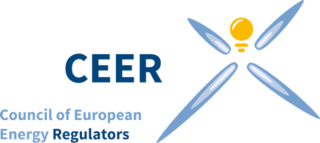| Ionian Adriatic Pipeline | |
|---|---|
| Location | |
| Country | Albania Montenegro Bosnia and Herzegovina Croatia |
| General direction | both directions |
| From | Fier, Albania |
| Passes through | Montenegro, Bosnia and Herzegovina |
| To | Split, Croatia |
| General information | |
| Type | Natural gas |
| Expected | 2025/2026 |
| Technical information | |
| Length | 511 km (318 mi) |
| Maximum discharge | 5×109 m3 (180×109 cu ft) per year |
| Diameter | 800 mm (31 in) |
| Operating pressure | 75/85 bar (7.5/8.5 Mpa) |
The Ionian Adriatic Pipeline (IAP) is a proposed natural gas pipeline in Southeast Europe. It would run from Fier in Albania through Montenegro, and Bosnia and Herzegovina, to Split in Croatia.
In Fier, IAP would be connected with the Trans Adriatic Pipeline. Trans Adriatic Pipeline AG has signed memorandums of understanding with developers of the IAP project, including Plinacro (Croatia), BH-Gas (Bosnia and Herzegovina), and governments of Montenegro and Albania. [1] [2] [3]
In Split, the pipeline would be connected with the existing gas transmission system of Croatia. In addition, it may be connected with other new gas infrastructure, including the Krk LNG terminal in Krk. [1] [2]
The length of pipeline would be 516 kilometres (321 mi). The pipeline would be bi-directional and its capacity would be 5 billion cubic metres (180 billion cubic feet) of natural gas per year. [1] [2]
The gas pipeline nominal diameter is 800 mm, and the operating pressure is 85/75 bar. [4]
The ministerial declaration on the IAP project was signed on 25 September 2007 in the framework of the Energy Community. [5]
Feasibility Study is drawn up, Designing Phase is in progress, Commissioning is planned in 2025/2026. In August 2016 in Dubrovnik the Ministerial Memorandum of Understanding and Cooperation concerning the cooperation and implementation of IAP was signed among Albania, Croatia, Montenegro and Bosnia and Herzegovina. In accordance with the Memorandum the Project Management Unit (PMU) was established to carry out activities on the project. The members of PMU are representatives of the relevant Ministries and TSOs, and members of SOCAR In February 2018 at the meeting of the Ministerial Council of the Southern Gas Corridor a Letter of Intent was signed on establishing an IAP Project Company among TSOs of IAP relevant countries. The establishing of IAP company is in progress. [4]

Transport in Albania consists of transport by land, water and air, which are predominantly under the supervision of the Ministry of Infrastructure of Albania. The development and improvement of the transport in the country remains among the most important priorities of the Government of Albania.

The term Greater Serbia or Great Serbia describes the Serbian nationalist and irredentist ideology of the creation of a Serb state which would incorporate all regions of traditional significance to Serbs, a South Slavic ethnic group, including regions outside modern-day Serbia that are partly populated by Serbs. The initial movement's main ideology (Pan-Serbism) was to unite all Serbs into one state, claiming, depending on the version, different areas of many surrounding countries, regardless of non-Serb populations present.
The Kosovo Campaign Medal (KCM) is a military award of the United States Armed Forces established by Executive Order 13154 of President Bill Clinton on May 3, 2000. The medal recognizes military service performed in Kosovo from March 24, 1999 through December 31, 2013.

The Central European Initiative (CEI) is a forum of regional cooperation in Central and Eastern Europe, counting 18 member states. It was formed in Budapest in 1989. The body was developed on the basis of earlier experiences with The Alps-Adriatic Working Group. The CEI headquarters have been in Trieste, Italy, since 1996.

The Energy Community, commonly referred to as the Energy Community for South East Europe (ECSEE), is an international organization consisting of the European Union (EU) and a number of non-EU countries. It aims to extend the EU internal energy market to wider Southeast Europe. The members commit to implement relevant EU energy acquis communautaire, to develop an adequate regulatory framework and to liberalize their energy markets in line with the acquis under the founding Treaty.

The Southeast European Cooperative Initiative (SECI) is a multilateral regional initiative that has been initiated by the European Union, the United States of America and the countries of Southeast Europe within the framework of the Organization for Security and Cooperation in Europe (OSCE) as a support to the implementation of the Dayton Accords in December 1996 at the inaugural session at Geneva on the basis of Final Points of Common EU-USA Understanding.

The Adriatic Charter is an association formed by Albania, Croatia, North Macedonia and the United States for the purpose of aiding their attempts to join NATO.

The Adriatic Highway is a road that stretches along the eastern coast of the Adriatic Sea and is part of the European route E65. The road passes through Croatia, with smaller stretches through Bosnia and Herzegovina and Montenegro and ends at the Montenegro-Albania border. It is an undivided two-lane road for almost its entire length, with the exception of a short stretch through Zadar and a 24 kilometres (15 mi) dual-carriageway section from Plano (Trogir) to the southeast suburbs of Split. It was planned in the 1930s and built in the 50s and 60s. The dual carriageway is planned to be extended further southeast to Omiš. Completion of the Adriatic Ionian motorway is proposed in order to replace Adriatic Highway as a high-performance road transport route along the Adriatic coast.

South Stream is a canceled pipeline project to transport natural gas of the Russian Federation through the Black Sea to Bulgaria and through Serbia, Hungary and Slovenia further to Austria. It was never finished.

The Trans Adriatic Pipeline is a natural gas pipeline operational since 2020, running from Greece through Albania and the Adriatic Sea to Italy. It is the final section of the Southern Gas Corridor originating in Azerbaijan. As of 2022, capacity is 10 bcm per year.
The New European Transmission System (NETS) is a project to unite Central and South Eastern Europe's natural gas transmission networks by creating a common gas transmission system operator (TSO). The project is foreseen to create a sizable and efficient regional gas market that significantly enhances gas supply security in the participating countries.

The Adriatic Ionian Euroregion is a Euroregion comprising countries and their subdivisions bordering the Adriatic and Ionian Sea. The president of the organization is Nikola Dobroslavić, President of the Region of Dubrovnik. The Euroregion is formally established as a nonprofit organization according to the law of Croatia.

The Council of European Energy Regulators (CEER) is a non-profit organization in which Europe's national energy regulators co-operate to protect consumer interests and to facilitate the creation of a single, competitive, and sustainable internal market for gas and electricity in Europe.

The accession of Albania to NATO took place in 2009. Albania's relationship with the North Atlantic Treaty Organization (NATO) began in 1992 when it joined the North Atlantic Cooperation Council. In 1994, it entered NATO's Partnership for Peace, which began Albania's process of accession into the alliance. In 1999, the country received a Membership Action Plan (MAP). The country received an invitation to join at the 2008 Bucharest Summit and became a full member on April 1, 2009.

Adria oil pipeline is a crude oil pipeline in Croatia, Serbia, and Hungary with branch lines to Slovenia and Bosnia and Herzegovina.

Adriatic–Ionian motorway or Trieste-Kalamata Highway or the Blue Corridor, is a future motorway that will stretch along the entire eastern shore of the Adriatic and Ionian seas, spanning the western coast of the Balkan peninsula from Italy in the north through Slovenia, Croatia, Montenegro, Albania to Greece in the south.

The Adriatic Sea is a body of water separating the Italian Peninsula from the Balkan Peninsula. The Adriatic is the northernmost arm of the Mediterranean Sea, extending from the Strait of Otranto to the northwest and the Po Valley. The countries with coasts on the Adriatic are Albania, Bosnia and Herzegovina, Croatia, Italy, Montenegro, and Slovenia.

The Southern Gas Corridor is an initiative of the European Commission for a natural gas supply route from Caspian and Middle Eastern regions to Europe, proposed in 2008. The goal of the Southern Gas Corridor is to reduce Europe's dependency on Russian gas and add diverse sources of energy supply. The route from Azerbaijan to Europe consists of the South Caucasus Pipeline, the Trans-Anatolian Pipeline, and the Trans Adriatic Pipeline. The total investment of this route is estimated US$35 billion. The main supply source would be the Shah Deniz gas field, located in the Caspian Sea.

The Trans-Anatolian Natural Gas Pipeline is a natural gas pipeline in Turkey. It is the central part of the Southern Gas Corridor, which connects the giant Shah Deniz gas field in Azerbaijan to Europe through the South Caucasus Pipeline and the Trans Adriatic Pipeline. The pipeline has a strategic importance for both Azerbaijan and Turkey. It allows the first Azerbaijani gas exports to Europe, beyond Turkey. It also strengthens the role of Turkey as a regional energy hub.
Conference of Western Balkan States was a 28 August 2014 conference of heads of states and governments of Western Balkans region initiated by German chancellor Angela Merkel. An idea for organization of conference came in light of the celebration of the 100th anniversary of the beginning of World War I. It is the first conference in this framework and organizers expressed their desire to continue it in future with Vienna and Paris mentioned as a potential next hosts after Berlin. Günther Oettinger confirmed at conference that event will be organised annually with Vienna as a host city in 2015 and Paris in 2016.